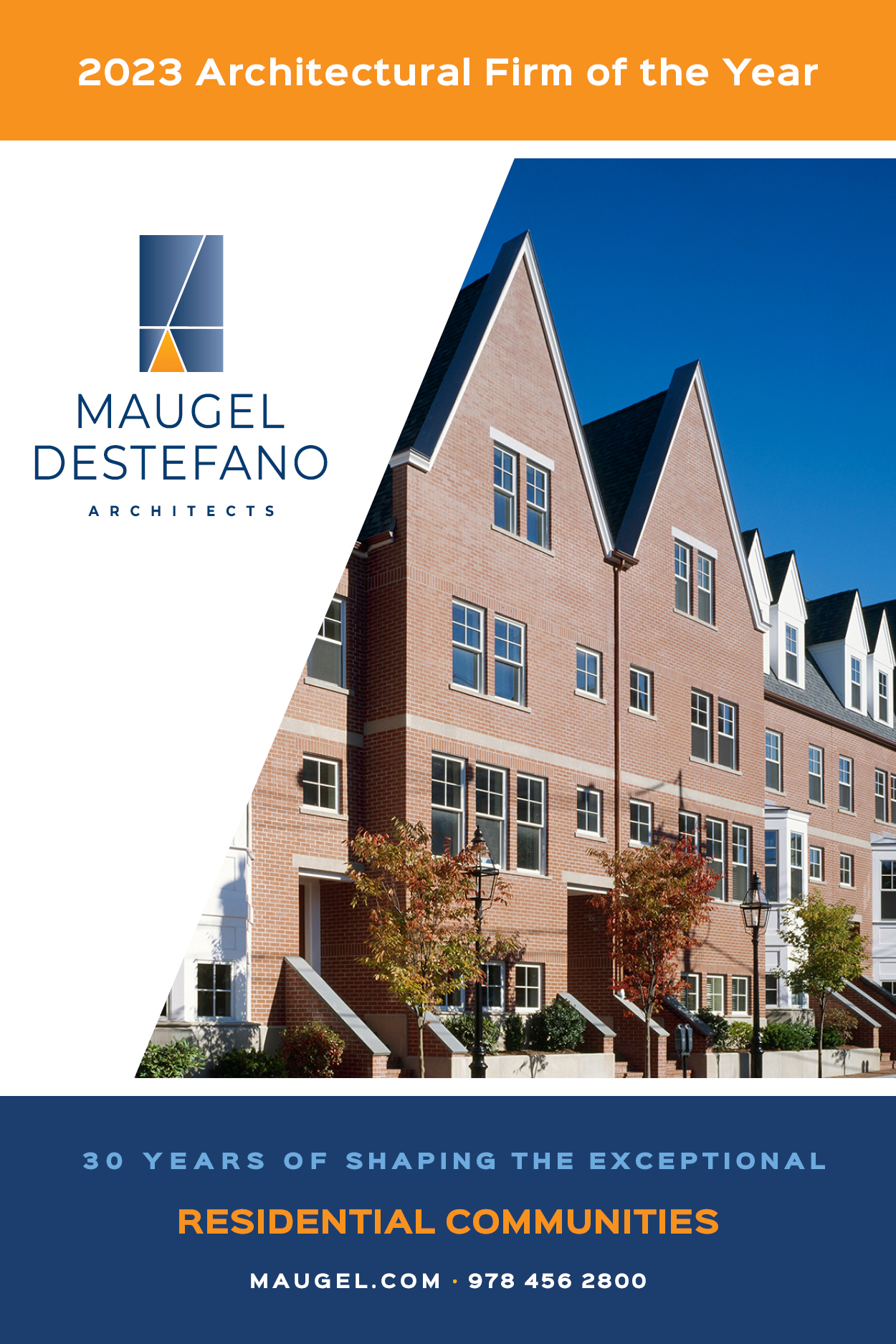BOSTON– Boston’s 1.3 million-square-foot air-rights complex, known as Fenway Center, is set to open its first phase, called Bower, this summer, reconnecting three neighborhoods with new housing and open space designed by The Architectural Team (TAT).
Designed by TAT for Fenway Center Development LLC — a joint venture of Gerding Edlen, Meredith Management, and Nuveen — Bower brings 312 residential units and 37,000 square feet of retail space across two infill buildings, activating a former parking lot and other underutilized plots between long, city-owned bridges along Beacon Street and Brookline Avenue.
One of the city’s most significant urban design stories in a generation, the Fenway Center megadevelopment is located adjacent to the historic Fenway Park, and reimagines an underutilized urban crossroads as a walkable, pedestrian-oriented community core that reconnects the growing Fenway, Kenmore, and Longwood Medical Area neighborhoods.
At Bower, the smaller of the two buildings is seven stories and features a multi-color gridded facade that responds to the surrounding neighborhood context on historic Beacon Street. A larger, 14-story tower is realized in a dynamic, angular form. In a first for Boston multifamily residential design, both buildings utilize View Dynamic Glass, a “smart” glazing that allows access to views and natural light while maintaining thermal comfort and controlling glare.
Both Bower structures also offer a mix of studio, one-, and two-bedroom rental homes. Amenity highlights include expansive common roof deck areas on each building, with the taller tower’s indoor/outdoor spaces offering partial views into Fenway Park, as well as a glass-enclosed atrium. The interiors, by Planeta Design Group, incorporate biophilic design elements throughout common spaces and public areas.
Key to the project team’s goal of smart, community focused growth, public amenities at Bower include a 12,000-square-foot air-rights deck and multi-level landscaped pedestrian walkways that connect the two buildings and their adjacent neighborhoods. The transit-oriented Fenway Center development will also offer access to commuter rail service at the revitalized Landsdowne Station.
“Fenway Center represents one of Boston’s best opportunities for transformation and intelligent growth,” says TAT’s Jay Szymanski, AIA, LEED AP. “By adding new housing and creating physical connections within the city that did not exist before, this project shows how development and design teams can build tremendous community value from underutilized land assets.”
“Fenway Center represents one of Boston’s best opportunities for transformation and intelligent growth,” says TAT’s Jay Szymanski, AIA, LEED AP. “By adding new housing and creating physical connections within the city that did not exist before, this project shows how development and design teams can build tremendous community value from underutilized land assets.”
















